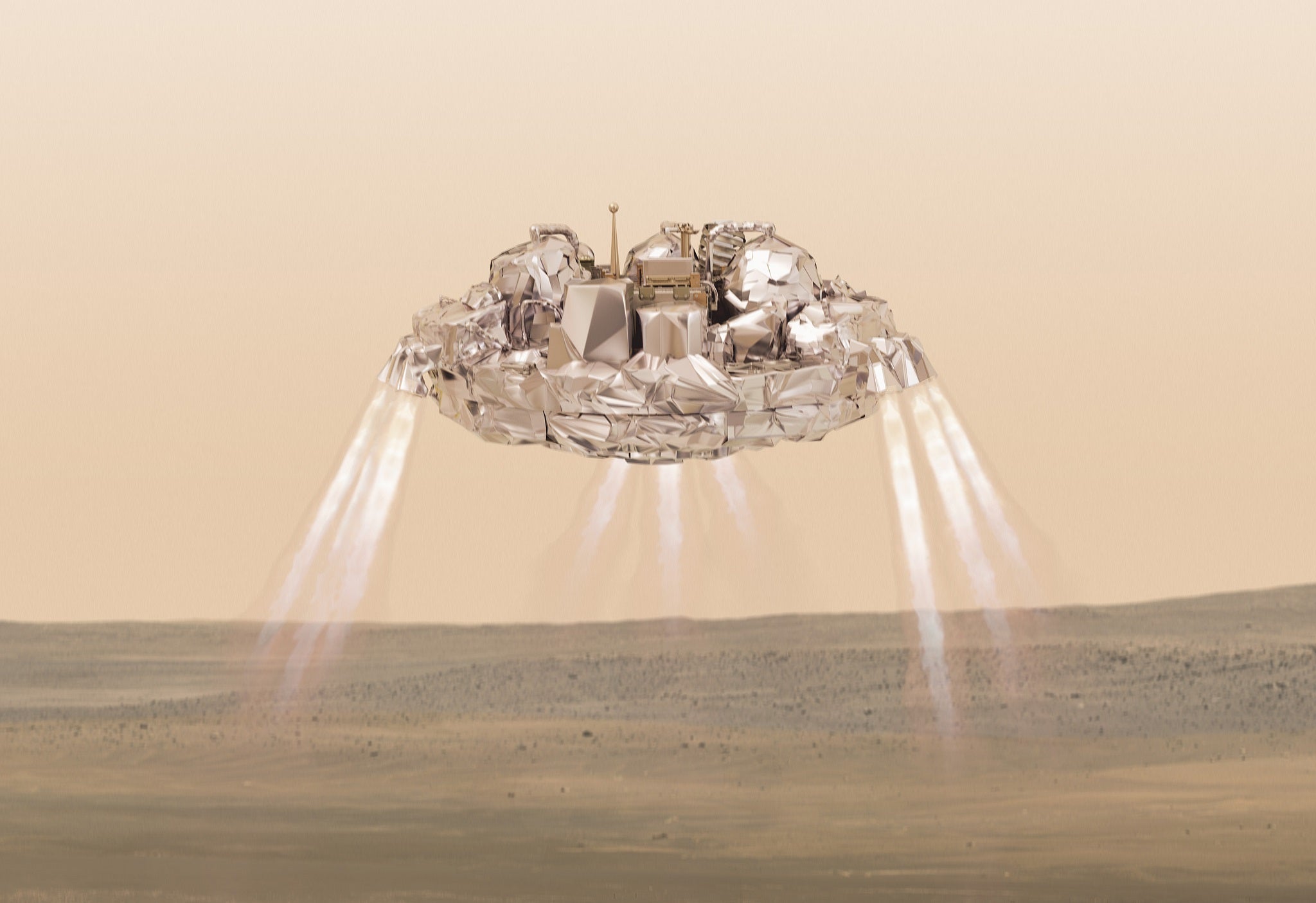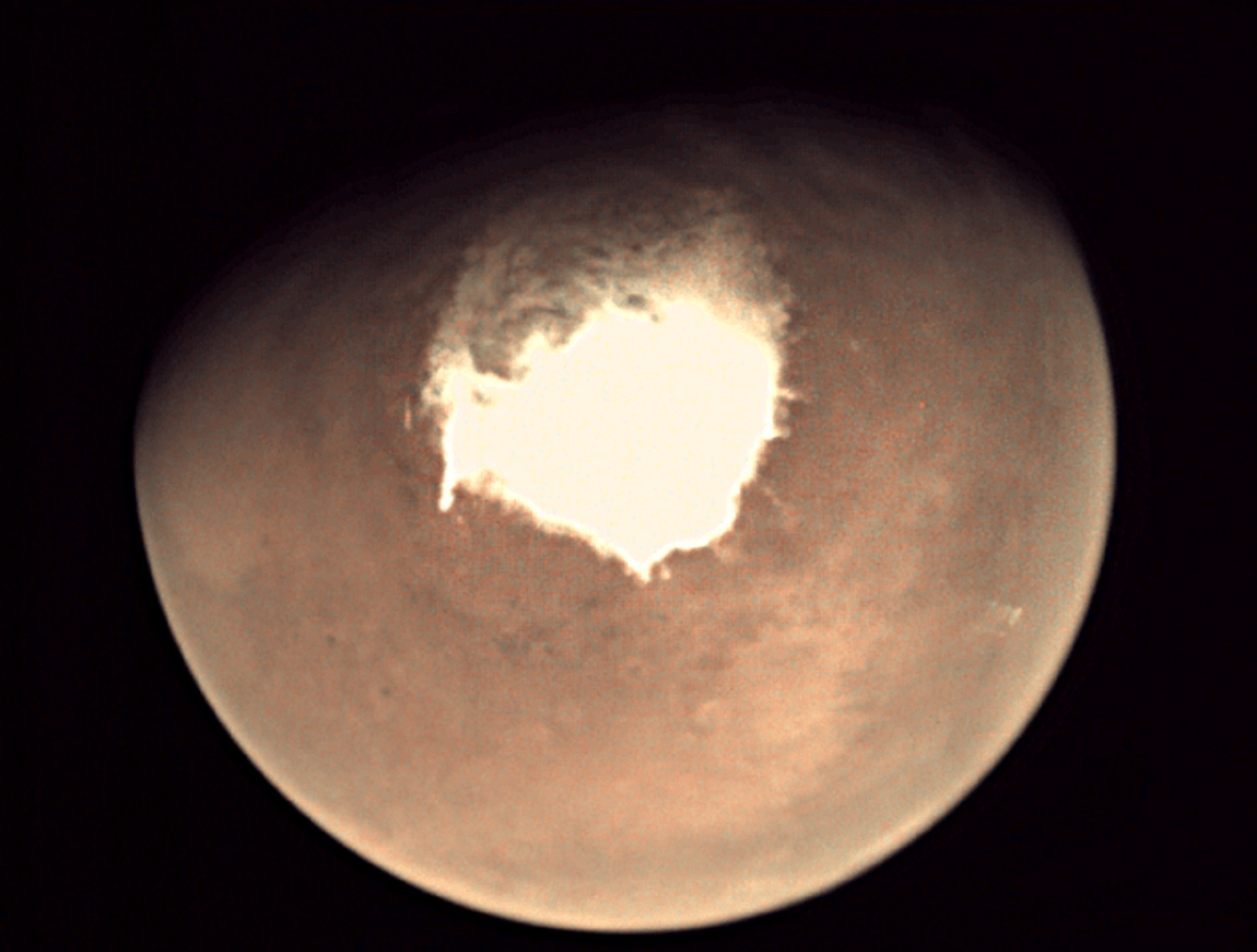What missing lander means for man's quest to find life on Mars
Finding out what happened to Schaiparelli is vital because in 2020 the next phase of the mission is to land a craft on the Red Planet

Your support helps us to tell the story
From reproductive rights to climate change to Big Tech, The Independent is on the ground when the story is developing. Whether it's investigating the financials of Elon Musk's pro-Trump PAC or producing our latest documentary, 'The A Word', which shines a light on the American women fighting for reproductive rights, we know how important it is to parse out the facts from the messaging.
At such a critical moment in US history, we need reporters on the ground. Your donation allows us to keep sending journalists to speak to both sides of the story.
The Independent is trusted by Americans across the entire political spectrum. And unlike many other quality news outlets, we choose not to lock Americans out of our reporting and analysis with paywalls. We believe quality journalism should be available to everyone, paid for by those who can afford it.
Your support makes all the difference.Researchers at the European Space Operations’ Centre in Darmstadt, Germany, had another one of those nervous days – waiting to hear first from a probe designed to land on Mars’ surface, and then from the probe’s orbiting mothership. By the end of the day, the flight engineers and mission scientists were half satisfied – just after 16:00 (UT) on 19 October, they received the signal from the Trace Gas Orbiter. The spacecraft had made it safely into Mars orbit. Unfortunately, the Schiaparelli lander was less communicative, and no unambiguous landing signal was received.
Loss of the lander is disappointing, because it was a precursor to the system that will be deployed in four years to land a rover designed to search for life below the planet’s surface.
The Trace Gas Orbiter had to make a crucial manoeuvre to bring it into orbit under Mars’ gravitational influence, a time which is always one of concern for the space flight engineers. Staff in the control centre celebrated with cheers and joyful hugs when they received the signal that the probe had made it. The orbiter is only ESA’s second mission to Mars – Mars Express in 2003 being the first.
Unfortunately, the orbiter’s travelling companion, Schiaparelli, may not be in such a great situation. In the same way that the lander carried by Mars Express failed to signal safe arrival on the surface, the Trace Gas Orbiter’s lander has so far remained silent. Schiaparelli was transmitting during its descent, and its signal was live until about 50 seconds before the anticipated touch down.
Additional data were received from Schiaparelli by the orbiter, and analysis of diagnostic information in the data package should inform ESA what might have gone wrong. It is clear from the telemetry data that the parachute deployed, the heat shield was jettisoned and the retro rockets fired briefly. But it will take a bit longer to determine what happened during the final few seconds of the descent.
It is important to find this out because Schiaparelli is not a science-focused lander. Although it carried a variety of instruments down to the martian surface, including a camera, its main purpose was to test a new Entry, Descent and Landing Module for the next phase of the mission: ExoMars 2020, which will aim to land a rover on the Red Planet. Fortunately, the telemetry data also give information about things including the structure of the atmosphere and wind speeds, so some of the science goals of Schiaparelli will be achieved.

Mars as seen by the webcam on ESA’s Mars Express orbiter on 16 October 2016
Without Schiaparelli, ExoMars 2020 becomes riskier, because landing a rover on the surface has to be a careful operation. There is unlikely to be another opportunity to test the landing module prior to it being used to deploy the rover – so finding out what went wrong is crucial, so it can be corrected prior to 2020. The ExoMars rover will carry a drill that should be able to get through Mars’ surface to a depth of two metres, thought to be well below the zone in which UV radiation from the sun is able to destroy organic matter. The idea is that if there is any life on Mars, it is likely to exist below the surface – and the ExoMars drill hopes to find it.
It’s not the first time we have tried to find life on Mars. About a century and a half ago, Giovanni Schiaparelli published a map of Mars based on extensive telescope observations of the planet as it approached its minimum distance to the Earth in the summer of 1877. The map, with its detailed labelling of land masses and seas, had a significant influence on Mars research over the following decades – especially after the features that Schiaparelli marked as “canali” were mistranslated as “canals”, rather than “channels”. The noted astronomer and polymath Percival Lowell was captivated by Schiaparelli’s findings, and interpreted the features as artificial, produced by intelligent life forms.
In his 1908 work Mars as the Abode of Life, Lowell states: “We have carefully considered the circumstantial evidence in the case, and we have found that it points to intelligence acting on that other globe, and is incompatible with anything else.” Unfortunately for Lowell, subsequent observations with more powerful telescopes revealed that the channels were not real features, but were likely to be artefacts produced as optical illusions caused by dust in the planet’s atmosphere.

Map of Mars by Percival Lowell. He believed it signalled signs of intelligent life
Notwithstanding the lack of clear evidence that life exists or ever has existed on Mars, the possibility that the planet might be (or has been) an abode for life is one that is still eagerly considered – which is why the arrival of the latest mission has been greeted with enthusiasm by the scientific community.
The Trace Gas Orbiter carrying the Schiaparelli Lander was launched from the Baikonur Cosmodrome in March 2016, and the mission is undertaken in collaboration with the Russian space agency Roscosmos. The orbiter will circle Mars for another year before it reaches the orbit it requires in order to start its three-year mission to map the distribution and concentration of trace gases in Mars’ atmosphere – including methane. Although methane is not a definitive indicator of living organisms, its presence is frequently associated with biological activity.
Even though Percival Lowell was convinced that there was life on Mars, he was not optimistic about our ability to meet with it. Mars as the Abode of Life concludes with the following sentences:
To our eventual descendants life on Mars will no longer be something to scan and interpret. It will have lapsed beyond the hope of study or recall … The drying up of the planet is certain to proceed until its surface can support no life at all. Slowly but surely, time will snuff it out. When the last ember is thus extinguished, the planet will roll a dead world through space, its evolutionary career forever ended.
We can only hope that measurements made by the the Trace Gas Orbiter over the next few years vindicate Lowell’s belief in the presence of Martian life, but contradict his pessimistic view of its survival potential.
Monica Grady is professor of planetary and space sciences at the Open University
© The Conversation
Join our commenting forum
Join thought-provoking conversations, follow other Independent readers and see their replies
Comments